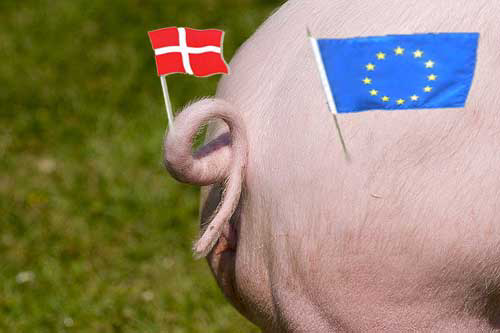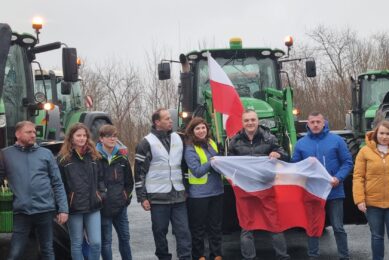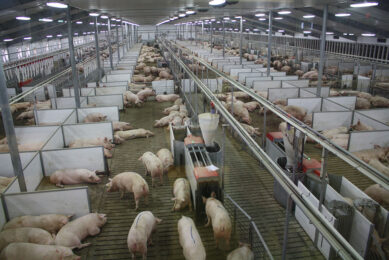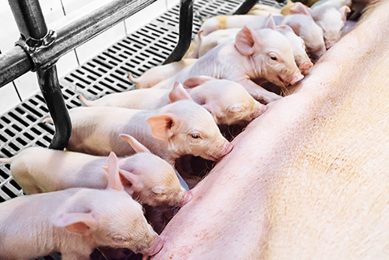Don’t let the Danish tail wag the European body

I am strongly concerned about the increasingly Danish orchestrated rhetoric coming out of the European Parliament regarding the antimicrobial resistance issues such as MRSA and ESBL-producing bacteria and driving the agenda of their own perceived pig industry problems across the whole of the European Union, who do not need or want such draconian, extreme measures.
Denmark has built an exceptional pig industry with approximately 5 pigs produced per head of human population. This is 10 times the EU average of 0.5pigs/person and 30 times the UK figure. So why should their magnified resistance problems and extreme control measures be forced down the throats of the EU as a whole? They are the exception not the rule.
They have seen a surge of MRSA cases in the human population in Denmark but only 5% of the clinical infections have been caused by the ‘pig associated’ CC398 clone and they have reported that over 90% of the cases could be traced to contact with pigs. This may be considered more of a ‘health and safety’ issue from working with Danish pigs, rather than being associated with their current human epidemic.
So what is driving this? Is it medical paranoia, the pharmacist lobby is reportedly very strong in Denmark and they now supply the antibiotics, or are they over-reacting to a situation, as they did to antibiotic growth promoters back in the 1990’s, where they got it completely wrong. They had to use the political ‘precautionary principle’ to enact the legislation, as we did in the EU, because there was absolutely no scientific or epidemiological data published to back it up. They also damaged animal health and welfare by increasing the incidence of post-weaning diarrhoea in young piglets and ileitis in growers by introducing the legislation so quickly. Yes, this was soon corrected, but only at the expense of trebling the use of therapeutic antibiotics, such as the tetracyclines and macrolides, lincosamides and pleuromutilins. They also got it completely wrong over the introduction of live US strain PRRS vaccine, which reportedly caused more disease problems than the wild EU strains and helped compound this problem in the EU. I could also add that neither the UK nor Ireland have MRSA CC398 and live US strain PRRS endemic in their pig herds (possibly a good source for future supply of breeding stock), so why should we all have to follow down the over-restrictive Danish model for antimicrobial distribution, use and resistance control? Having gone down that route already, is it making the Danish industry less competitive, are they seeing more health and welfare issues arise and are customers not wanting to buy their MRSA/PRRS infected pigs?
“Prevention is better than cure” that is certainly the case when having to use antimicrobials to treat animals. Prevention of groups of animals that have been exposed to or are likely to be carrying disease-causing infections is critical to maintain their health and welfare and stop pain, suffering and even death. It should surely be up to the veterinarian, who is trained to diagnose diseases and treat and prevent them, as well as help the farmer resolve his management problems, to make those decisions. It is the vet that should also be allowed to prescribe and supply the medicines, as they are directly involved in the prompt treatment and response of the animals under his/her care. Writing a prescription does not mean a product will be used and compliance is out of the window. At our recent Pig Veterinary Society, I did not see any Bentleys or Ferraris parked outside, so they are not the super-wealthy. Most pig vets drive practical cars that will drive them over long distances, over difficult terrain and in all weathers.
Monitoring the use of antimicrobials by the vet and the farmer is likely to come and favoured by many countries. Denmark, Netherlands and recently Germany have also introduced these measures. It will add to the bureaucracy and cost of production, as the data will have to be reported centrally but most farms are already recording drug use, withdrawal periods and these are regularly reviewed in their regular veterinary health plan visits and checks.
The EU Council and EU Commission have made sensible comments about the strategy and the implementation they are planning to follow. Listen to your expert bodies such as the EMA (European medicines Agency) who have already taken steps to stop the ‘off label’ use of 3rd and 4th generation cephalosporins in chickens, the main source of ESBLs, by making them contra-indicated, as well as changing the product SPCs (use information) to avoid any unnecessary use, where other lower antibiotics would also be effective. The work they have produced regarding the ESVAC project on antimicrobial use in animals has been exceptional. It is a shame that Germany and Italy did not contribute this time, as they account for 25% of the EU pig production. EFSA (Food safety) have also been collating good data regarding the zoonotic organisms such as Salmonella and Campylobacter and shown that Salmonella cases in man are falling dramatically due to the controls on Salmonella in poultry and they also identified poultry as a major potential source of ESBLs. In fairness too, they also showed with their impact assessment that controlling Salmonella in pigs would cost 10 times more than the cost of the disease in man and tempered their responses accordingly. I hope and suspect the Commission will come to similar conclusions, as they do their impact assessments over antibiotic use in animals and resistance transmission to man. My own limited impact assessment estimates the transmission of resistance from pigs to man in comparison with man’s own use of antibiotics to be negligible at 1: 5000.
We do need more information collation over the use of antibiotics in animals and man and relating these to antimicrobial resistance also, so we can make better decisions over how they should be used in the veterinary and medical sector, if we need to. However, I hope the European Commission will listen to the experts in COPA/COGECA (farmers and cooperatives), IFAH (pharma industry), FVE (vets), and EPRUMA (responsible use platform), that we do not need these over-restrictive rules put forward by the European Parliament, which has been largely orchestrated by the Danish representation.
What do you think?











